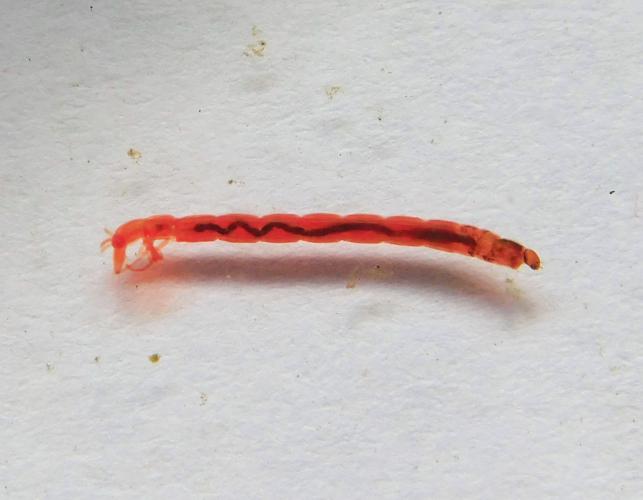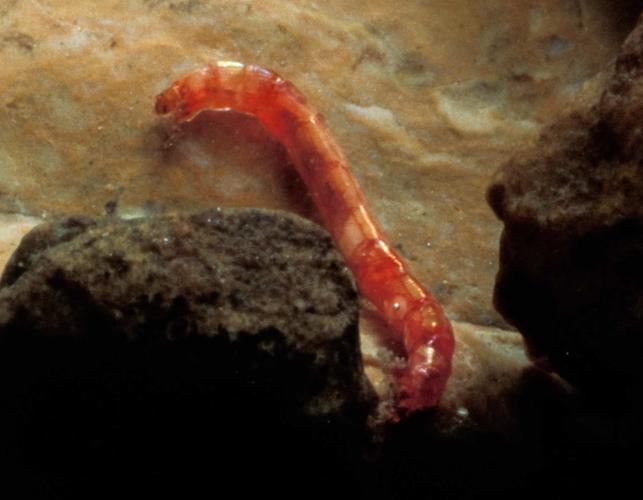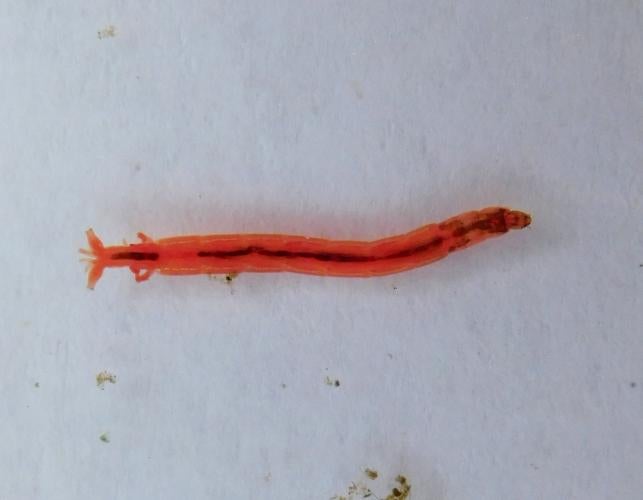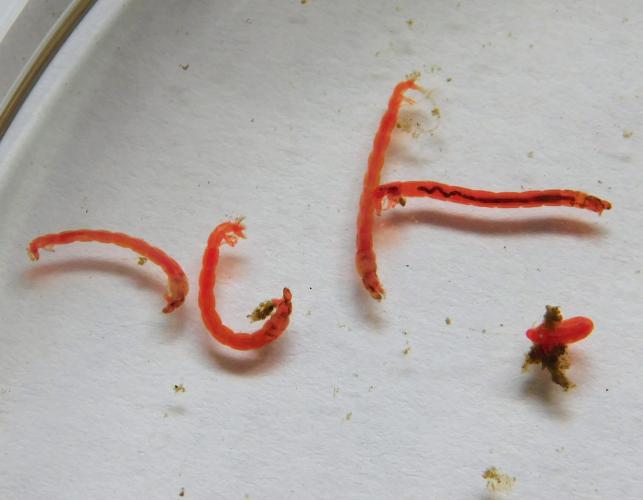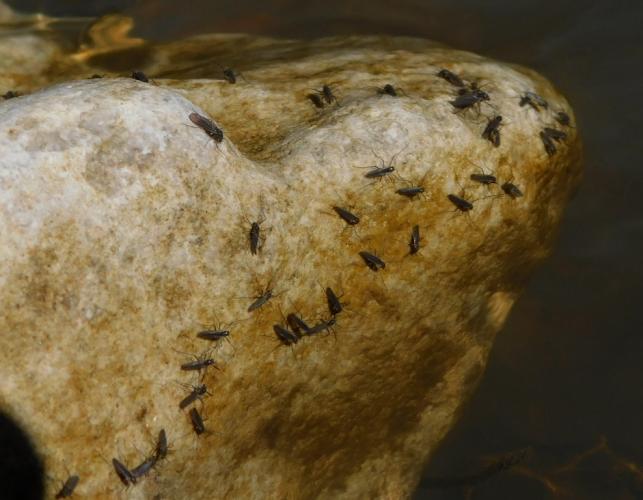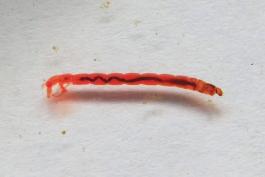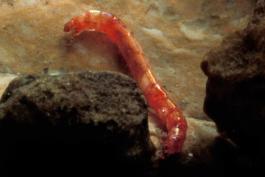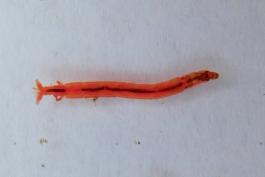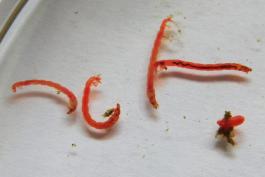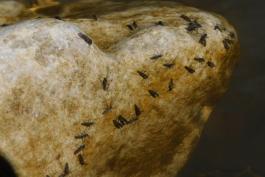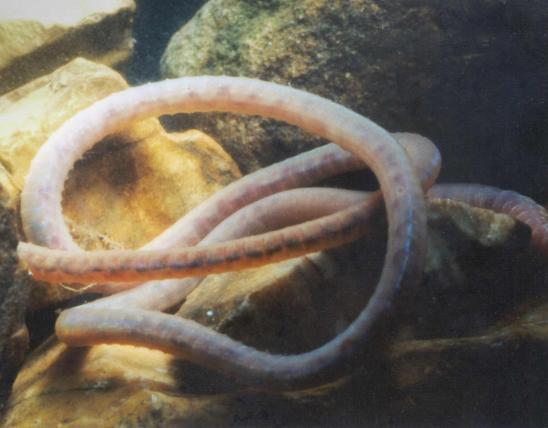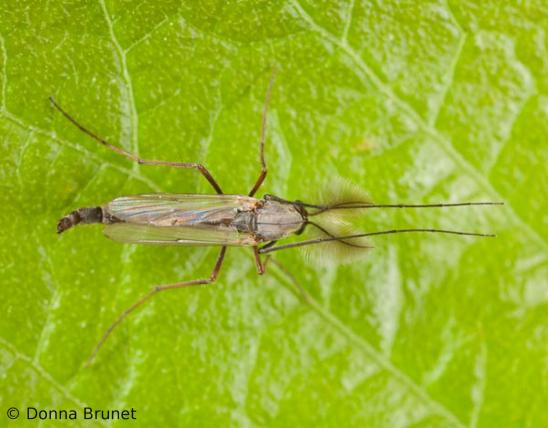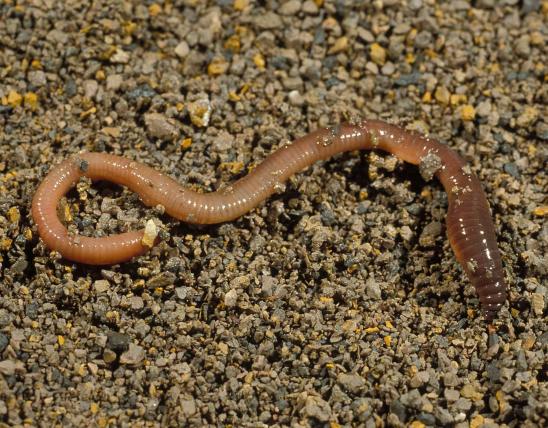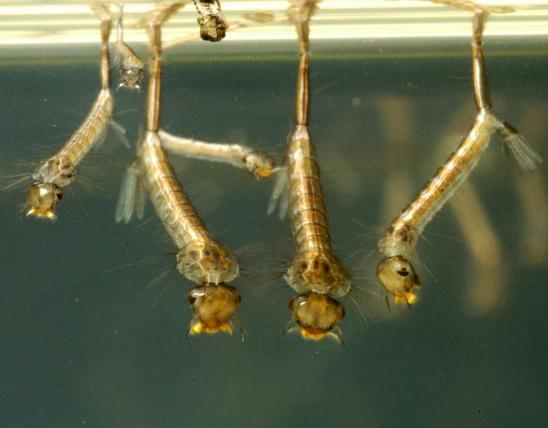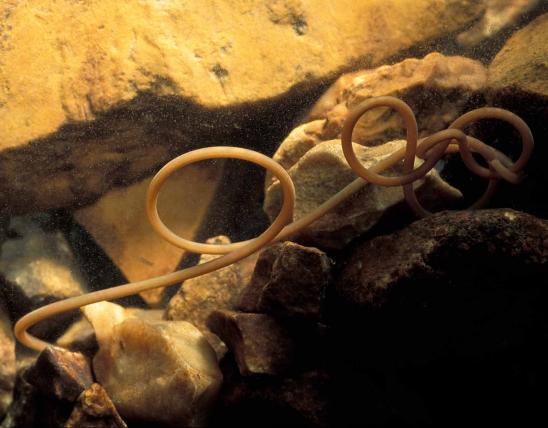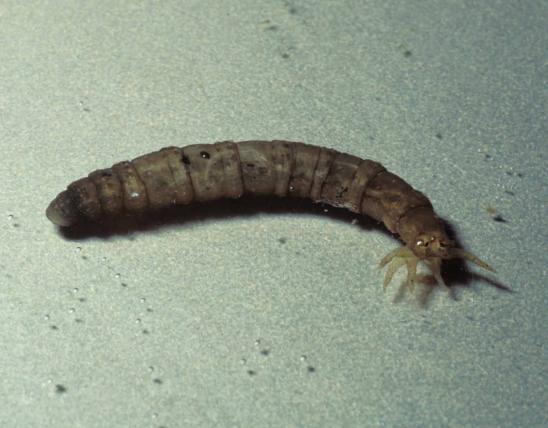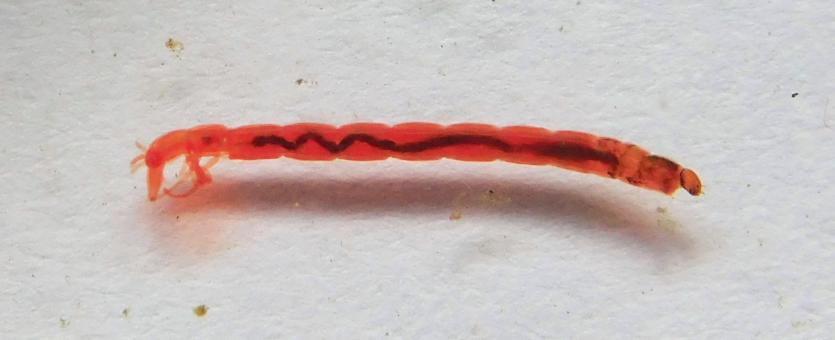
Midge fly larvae are thin, with cylindrical (not flattened), slightly curved, segmented bodies. These wormlike larvae of flies have a distinctly separate head, which is typically darker than the rest of the body. Overall coloration can be light olive green, tan, or clear, but some are bright red from the hemoglobin molecules within their narrow bodies; these red species are often called bloodworms.
A close look at midge larva anatomy reveals 2 unjointed, fleshy prolegs beneath the head and 2 at the end of the body (though these posterior prolegs may be very tiny). Often the final section of the body bears some hairlike filaments that appear as paired tufts. Often the narrow digestive tract can be seen as a dark line running down inside the body.
Adult midges look a lot like mosquitoes: small and dainty, rather soft-bodied, with long, narrow wings and long, skinny legs; males often have feathery antennae, used for sensing the high-pitched sounds of female wings. Unlike mosquitoes, this family of midges, at rest, tend to hold their first pair of legs forward and upward (while many mosquitoes, at rest, hold their hind legs outward and upward). Midges in this family do not bite people at all.
Similar species: Some tubificid worms are also bright red from hemoglobin (which, incidentally is the same oxygen-carrying molecule humans have in our red blood cells). Thus red tubificid worms and red midge fly larvae are both sometimes called bloodworms. Midge larvae are insects and have distinct heads, leglike appendages, and often feathery structures, while tubifex worms are basically featureless (they are annelid worms, related to earthworms, and they are not insects).
Length: varies by species and age; stream species do not usually exceed ¼ inch in length, though species in lakes may be larger.
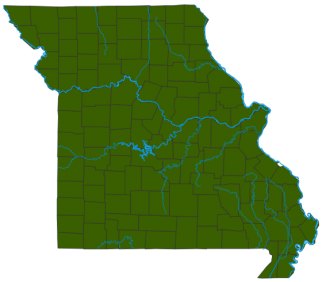
Statewide.
Habitat and Conservation
Midge larvae often abound in fresh water habitats generally living on the bottoms of ponds, lakes, and streams, often amid sunken leaves and other detritus. Some species form a protective tube around their bodies, made of saliva and silt, sand, or other materials. They eat a variety of decomposing plant and animal matter, and algae, and they provide a large food supply for many predators, including larger aquatic insects, fish, and more.
Food
Most of a midge's life is spent in the larval stages, usually at the bottom of a pond or other body of water, where they eat a variety of organic materials, mostly as scavengers or filter feeders, though a few are predatory of other small invertebrates. Some species construct rather elaborate nets for capturing plankton, or they create tunnels in plant stems with silken nets across the opening.
Adult midges in this family (Chironomidae), unlike mosquitoes, typically have a short proboscis (mouth tube), and they do not bite people. In fact, chironomid midges rarely eat anything as adults and only live for a few weeks at most.
Status
Both adults and larvae are harmless.
Globally, more than 7,300 species in this family have been described scientifically. Midges, mosquitoes, and others in their broad subgroup of flies may be some of the most ancestral or ancient flies.
Life Cycle
As larvae, most midges live at the bottoms of ponds, lakes, and other aquatic habitats. Some species live in other types of moist places (damp soil, rotting plant material, and so on). Most are scavengers and spend 1 to 3 years as larvae.
The pupae are aquatic, breathe air, and are a lot like the pupae of mosquitoes.
As an adult, a midge may live only a few weeks. Adult male midges are famous for joining together in swarms, "dancing" together in the air. Often, these cloudlike swarms congregate in the early evening, when the sun is getting low, and often they form just above some tall object or other marker — above a bush, on a hilltop, over a pool or other water, over a church steeple, above a dark object, or even above a person!
Human Connections
Chironomid midge larvae are sold at pet stores, freeze-dried or in flat frozen masses, as food for fish. As aquarists know, not all pet fish thrive on flaked foods alone, so these "bloodworms" are one of the many supplement choices more closely approximating the live foods fish eat in nature.
The family name, Chironomidae, is derived from a Greek word for "pantomimist" — someone who pantomimes — apparently for the adult fly's typical posture of holding its forelegs out in front of its body.
Ecosystem Connections
Midge larvae are a tremendously important food supply for young fish, insects, salamanders, and other aquatic predators needing relatively small quarry. The adult midges similarly provide abundant food for birds, dragonflies, and more.
